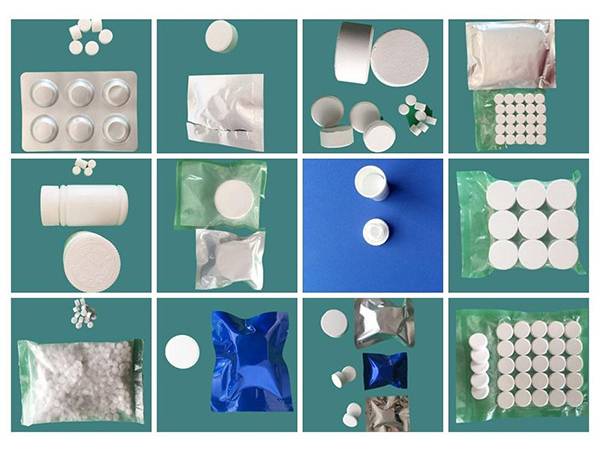



Industrial Production Methods for Sodium Hydroxide in Modern Manufacturing Processes
Industrial Manufacture of Sodium Hydroxide Processes and Applications
Sodium hydroxide, commonly known as caustic soda, is a highly versatile and essential chemical widely utilized across various industries. Its applications range from pulp and paper production to the manufacturing of soap, textiles, and various chemical intermediates. The industrial manufacture of sodium hydroxide predominantly occurs through two primary methods the electrolysis of sodium chloride solution (brine) and the lime-soda process.
Electrolysis of Sodium Chloride
The most prevalent method for producing sodium hydroxide is the electrolysis of sodium chloride solution, which occurs in an electrochemical cell. This process can be carried out using different cell types, including diaphragm cells, mercury cells, and membrane cells. Each type has its specific advantages and disadvantages in terms of efficiency, environmental impact, and product purity.
1. Diaphragm Cells In diaphragm cells, a porous barrier separates the anode and cathode compartments. Sodium chloride solution is introduced into the anode compartment, where it undergoes electrolysis. Chlorine gas is liberated at the anode, while hydrogen gas is produced at the cathode, along with sodium hydroxide in an aqueous solution. The diaphragm helps prevent the recombination of chlorine and sodium ions, ensuring a continuous production of sodium hydroxide.
2. Mercury Cells Mercury cells operate on a different principle, where sodium amalgam is produced as sodium ions are reduced to metal sodium at the cathode. The amalgam is then reacted with water to produce sodium hydroxide and hydrogen gas. While this method is highly efficient, it raises environmental concerns due to the toxicity of mercury.
3. Membrane Cells In membrane cells, an ion-selective membrane separates the anode and cathode compartments. This technology is considered one of the most environmentally friendly options as it uses less energy and produces higher purity sodium hydroxide. The sodium ions migrate through the membrane to the cathode, where they are reduced to form sodium hydroxide.
industrial manufacture of sodium hydroxide

Lime-Soda Process
The lime-soda process is another method for producing sodium hydroxide, though it is less common than the electrolysis method. In this process, sodium carbonate (soda ash) is reacted with calcium hydroxide (lime) in a highly controlled environment. The reaction produces sodium hydroxide and calcium carbonate as a byproduct. Although this method is advantageous in terms of raw material availability, it typically results in lower purity levels of sodium hydroxide compared to electrolysis.
Applications of Sodium Hydroxide
Sodium hydroxide's unique properties make it indispensable in various industrial applications. In the pulp and paper industry, it is used for the browning process, helping to break down wood fibers. In the textiles industry, it plays a key role in fabric processing, such as mercerization. Sodium hydroxide is also critical in the production of biodiesel, where it acts as a catalyst in the transesterification process.
Moreover, sodium hydroxide is used in water treatment facilities for pH adjustment and is a major component in the production of various chemicals, including bleaching agents and synthetic detergents. Its ability to dissolve organic matter makes it effective in cleaning agents and heavy-duty degreasers.
Conclusion
In conclusion, the industrial manufacture of sodium hydroxide is a critical process that directly impacts numerous sectors of the economy. The method of production, largely dependent on electrolysis, ensures the availability of this vital chemical. With ongoing advancements in technology and a growing emphasis on environmental sustainability, the future of sodium hydroxide manufacturing is poised for innovation and further development. Understanding these processes is essential for industries that rely on sodium hydroxide, making it a focal point for research and industrial advancements.
-
How and Why to Disinfect Water Softeners for Safe, Reliable WaterNewsNov.24,2025
-
Effective Deionized Water Disinfectant Solutions for Healthcare & Industrial UseNewsNov.24,2025
-
Commonly Used Disinfectant for Drinking Water – Global Uses & InnovationsNewsNov.23,2025
-
Chemical to Disinfect Water – Essential Solutions for Safe, Clean Drinking WaterNewsNov.23,2025
-
Blue Water Disinfectant: Safeguarding Global Water Quality with InnovationNewsNov.22,2025
-
Bleaching Powder for Water Disinfection – Affordable & Effective Water Treatment SolutionNewsNov.22,2025
-
Bleaching Powder Drinking Water: Effective, Affordable Disinfection WorldwideNewsNov.21,2025










